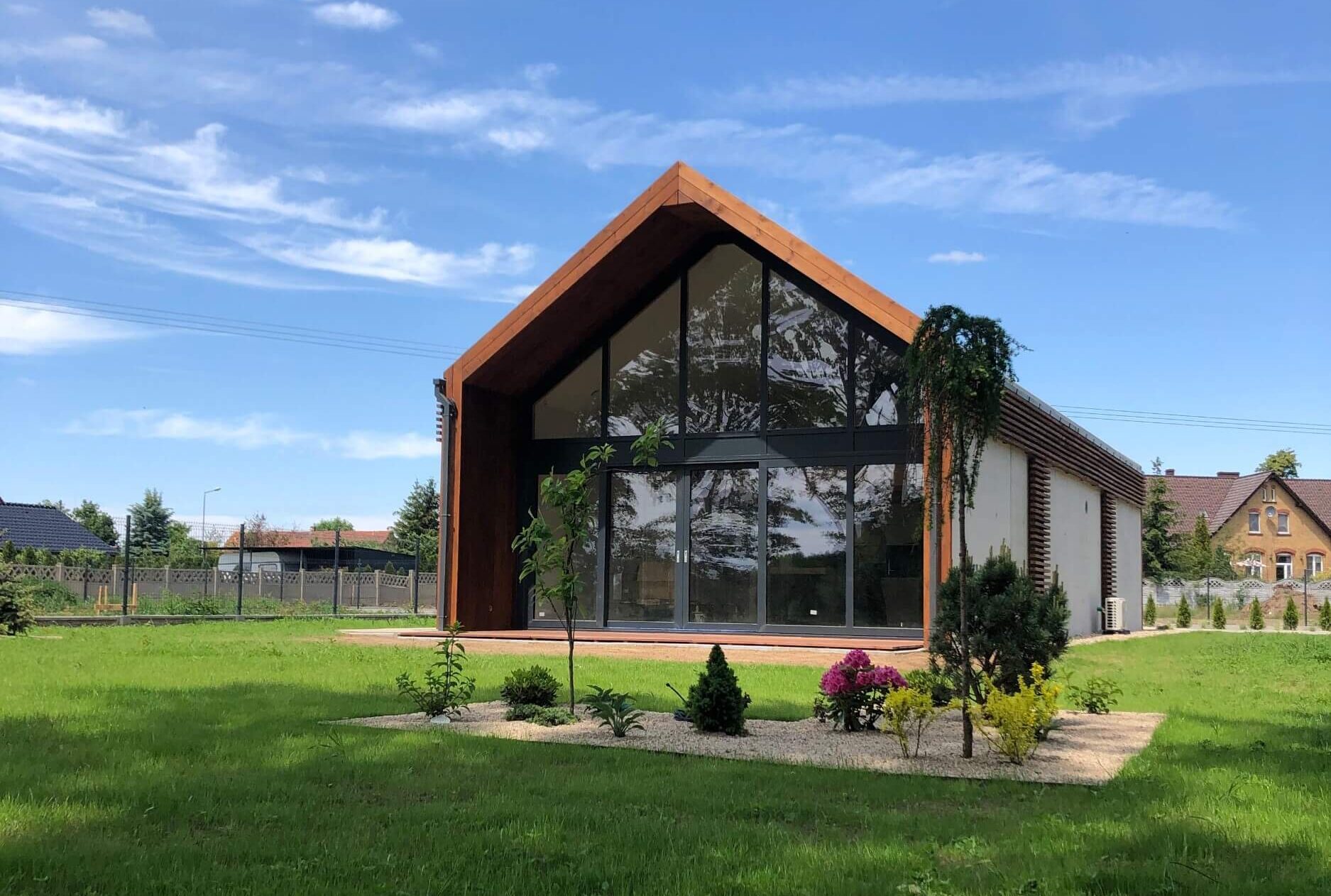This website uses cookies so that we can provide you with the best user experience possible. Cookie information is stored in your browser and performs functions such as recognising you when you return to our website and helping our team to understand which sections of the website you find most interesting and useful.
Environmental friendly solutions in a prefabricated house: 5 ideas
Photovoltaics
This is already one of the mandatory elements of any energy-efficient or zero-energy house. Photovoltaics uses sunlight, which is one of the renewable energy sources. In addition to environmental benefits, the installation of photovoltaic panels has economic advantages. By choosing to install them you become independent from energy supply and prices and significantly reduce the cost of maintaining the house for about 20-25 years (depending on the life span of the selected panels).
Read also: What is a recuperator?
Rainwater tank
Instead of running water, collect rainwater and use it to water your garden, lawn or potted flowers. All you have to do is place a special tank or a regular barrel and wait for the next rainfall. For a better effect you can put it right under the gutter and collect the rain on the roof.
If you want to make your home even greener, go one step further. Install a special rainwater storage tank connected to the equipment in the house. This way you can use the purified rainwater in the toilet or the washing machine – the rainwater is soft, so you can avoid limescale deposits.
Composter
A composter in the home garden is the best way to use ecological fertilizer. It is a reason why the compost is called “black gold” – it is a rich source of valuable minerals and components that make the soil more fertile and make plants or vegetables grow much better. Remember that a properly managed composter smells like fertile soil – if you smell rotting, it means that too little air is getting into the heap and there is a rotting process.
The recipe for compost is very simple: put leaves, branches, kitchen waste (e.g. egg shells, peelings, coffee grounds), cut grass, old potting soil or dried plants into a special container (you can buy ready-made or make your own with openwork walls for better ventilation). For a better effect, also add leftovers containing phosphorus, calcium, potassium and nitrogen. In the dry season, pour water over it so that it does not dry out.
What should not be added to a composter? First of all, sick leaves and plants, animal faeces, citrus peel, meat, fish, biodegradable materials, seeds, coal ash.
Read also: Pros and cons of prefabricated houses
Plants
A green house without plants? Impossible! Plants improve your mood, produce oxygen, increase air humidity (some plants also purify them!), have a relaxing effect. Flowers enrich the interior design and make it more cozy, ” homely”.
If you are wondering which plants can transform your home, bet on popular species: monstera, spathiphyllum, orchid, polypodium, zamioculcas, pilea. If you are looking for something more original, pay attention to begonia maculata, curio rowleyanus, ceropegia woodii, tradescantia or Monkey Mask monstera.
If you choose a SPINE prefabricated house, you get a perfectly lit interior so don’t worry that your plants will have too little light. And if you choose shadowy species, all you have to do is place them deep inside the room.
Recycling and waste separation bins
If you are just beginning your adventure with eco lifestyle, start with waste separation. Although it is already mandatory by law, not everyone actually practices it. And it costs money – and in the form of bills, and a polluted environment. So don’t wait and change your habits now.
Are you building a house and planning the layout? Set up a place for the waste bins right now. Remember to use bins for waste paper, glass, plastics, bio waste (some of which you can also throw into the composter) and mixed waste.
Environmentally friendly solutions in the SPINE prefabricated house
At SPINE we take care of our customers and the prefabrication technology allows us to build a house according to their needs. Do you want your future home to be environmentally friendly? Contact us and we will prepare an individual project for you, which will include all installations and equipment!
